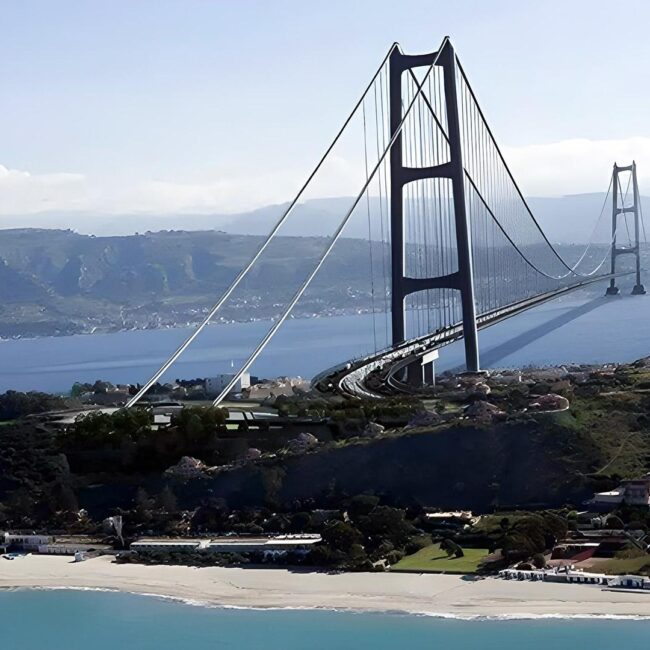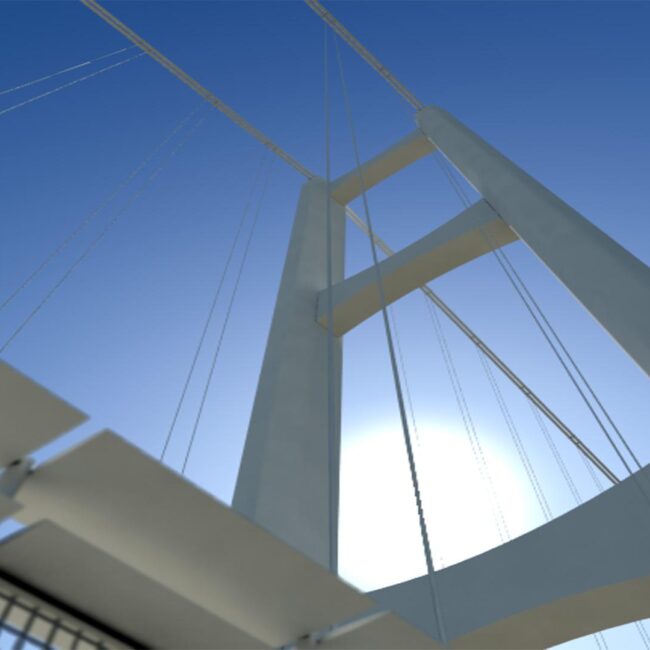THE FINAL DESIGN
PROJECT RESTART
Law Decree 35 of 31 March 2023 (converted into Law 58 of 26 May 2023) established the restart of activity leading to construction of the Strait of Messina Bridge.
PROJECT STAGES
FINAL DESIGN update
STRETTO DI MESSINA APPROVES FINAL DESIGN AND SUBMITS IT TO MINISTRIES AND RELEVANT AUTHORITIES
SERVICES CONFERENCES IS CONVENED AND EIA RESTARTS
EIA APROVAL
CIPESS APPROVAL
CONSTRUCTION BEGINS
OPENING TO TRAFFIC EXPECTED IN 2032
In line with the requirements of Law Decree 35, the MIT submitted the final design and the designer’s report to CIPESS (a Government Committee) for approval, together with any observations, requests and conditions arising from the Services Conference, any conditions resulting from the environmental impact assessment and the financial plan.
Stretto di Messina drew up the financial plan, showing how the cost of the project will be covered by the funding made available in the 2025 Budget Law, together with the funds raised following the Company’s earlier capital increase and expected income generated by the bridge.
Project milestones
- The Company called Stretto di Messina SpA, which holds the concession to build the Bridge, is “re-established” from June 2023.
- New shares with a total value of €370 million, reserved for the Ministry of the Economy and Finance, are subscribed for on 18 December 2023.
- On 15 February 2024, the Company’s Board of Directors approves the updated version of the Final Design of 2011, following a thorough examination involving the Company’s technical experts, the Project Management Consultant, an Expert Panel with responsibility for overseeing technical and specialist aspects, consisting of four leading experts in aerodynamics, aeroelastics, seismology, geotechnics and the environment, and the Scientific Committee .
- On 13 June 2024, the European Council confirms that the Strait of Messina Bridge is a key component of the “Scandinavian-Mediterranean” Corridor.
- On 17 July 2024, the European Commission provides €25 million in funding for the detailed design, accounting for 50% of the cost of the railway component of the design.
- On 13 November 2024, the Environmental Impact Assessment Committee expresses a favourable opinion on the design, a key step marking a first for the project.
- The Services Conference comes to a conclusion on 23 December 2024.
- As regards the Assessment of the Implications for the Site, the Company is required to prepare a detailed plan for compensatory measures for 3 Natura 2000 sites and to provide the necessary information package to the EU required by art. 6.4 of Directive 92/43/EEC (the Habitats Directive). The plan has been submitted to the Ministry for the Environment and Energy Security for examination by the Environmental Impact Assessment Committee.
- In this regard, on 9 April 2025, the Italian Cabinet approves the “IROPI report” on “Imperative Reasons of Overriding Public Interest”. Approval of the IROPI report is a key step in enabling the Company to finalise the information package to be submitted to the European Commission to complete the assessment of the implications for the site.
- On 21 May 2025, the Ministry for the Environment and Energy Security’s Environmental Impact Assessment Technical Committee expresses a favourable opinion on the Assessment of the Implications for the Site, stating that “all the documentation received shows that the Compensatory Measures are consistent with the need to guarantee that the site conservation goals can be met and are overall in line with the aims of the Natura 2000 network”. The Committee also issued a positive opinion on the final version of the information package to be submitted to the European Commission.
- The Programme Agreement is signed by the Ministry of Infrastructure and Transport, the Ministry of the Economy and Finance, Sicily Regional Authority, Calabria Regional Authority, Rete Ferroviaria Italiana, ANAS and Stretto di Messina on 16 July 2025. The Agreement sets out the technical and financial commitments of the signatories engaged in the construction and operation of the Strait of Messina Bridge and the related works. These include definition of the preparatory and related works for which the Rete Ferroviaria Italiana and ANAS are responsible, and the related implementation methods to be applied in order to optimise coordination and synchronisation of the project construction works.
- On August 6 2025, Approval of the final design for the Strait of Messina Bridge from the Interministerial Committee for Economic Planning and Sustainable Development (CIPESS) was based on the information package prepared and submitted by the Ministry of infrastructure and Transport. These consisted of: the final design updated with the Designer’s Report, including the schedule of preparatory works and services; the results of the Services Conference, published by the Ministry of Infrastructure and Transport; the positive opinion on the Environmental Impact Assessment and the Assessment of the Implications for the Site issued by the Environmental Impact Assessment Technical Committee (EIA-SEA) set up by the Ministry of the Environment and Energy Security; the Financial Plan; the survey report from the Ministry of Infrastructure and Transport declaring, among other things, that the project is fully funded, with the cost of approximately €13.5 billion covered by the funds already earmarked in the government’s budget and by those raised by the Company through the capital increase subscribed for by the Ministry of the Economy and Finance in 2023; the list of compensatory measures
- The updated cost of the project, totalling €13.5 billion, as confirmed in the Economic and Financial Planning Document for 2024, was fully financed in the 2025 Budget Law.
- Designer’s Report (102 Mb pdf)
- Report of the Scientific Committee (4,6 Mb pdf)
- Final Design
- Technical Aspects
Law Decree 35 of 31 March 2023 (converted into Law 58 of 26 May 2023) established the restart of activity leading to construction of the Strait of Messina Bridge.
On 15 February 2024, Stretto di Messina’s Board of Directors approved the Designer’s Report supplementing the Final Design of 2011, confirms the alignment of the Final Design with the Preliminary Design and identifies further requirements to be satisfied in the Detailed Design to ensure that it takes into account:
a) NTC2018 construction standards and the resulting changes to the geotechnical assessment;
b) the latest safety regulations;
c) specific design standards in design manuals currently in use, save for any exceptions;
d) environmental compatibility;
e) any further design adjustments deemed to be essential in view of recent developments in technology and in the use of building materials;
f) the testing called for in the opinion issued by the Scientific Committee.
Approval of the documentation is the result of a series of checks carried out by Stretto di Messina. In addition to the Company’s technical experts, this involved Parsons Transportation Group as the Project Management Consultant and an Expert Panel
with responsibility for overseeing technical and specialist aspects, consisting of four leading experts in aerodynamics, aeroelastics, seismology, geotechnics and the environment.
The Company also obtained a favourable opinion from the Scientific Committee with recommendations on the Report.
- Designer’s Report (102 Mb pdf)
- Report of the Scientific Committee (4,6 Mb pdf)
- Final Design
- Technical Aspects
ENTITIES ENGAGED IN THE PROJECT
Stretto di Messina has taken an innovative approach to structuring the organisation tasked with delivering the project. This involves a number of entities, including the General Contractor, the Project Management Consultant and the Environmental Monitor.

Stretto di Messina holds the concession to develop, design, finance, build and operate the Strait of Messina Bridge. It is responsible for the entire construction process and, subsequently, for operation of the infrastructure, with the exclusion of the railway tracks.
Selected following an international tender process, the Project Management Consultant is responsible for controlling and overseeing preparation of the final and detailed designs and construction of the Strait of Messina Bridge and its road and rail links. It is also responsible for control and oversight of the Environmental Monitor.
The Project Management Consultant is the US company Parsons Transportation Group, the global leader in the design and construction of suspension bridges. Stretto di Messina’s decision to adopt the project management model is of strategic importance. The aim is to take the most appropriate approach to overseeing and monitoring all the operational and design-related variables to ensure that the bridge meets the relevant quality standards and is delivered on time and within the established budget. Among other things, this will mean ensuring the closest possible coordination of all the entities involved in construction of the infrastructure.
The General Contractor is the entity selected by Stretto di Messina, following an international tender process, to produce the final and detailed designs and build the Strait of Messina Bridge and its road and rail links. It is also responsible for works supervision, the environmental monitoring of sites and HSE management.
The General Contractor is the temporary consortium, Eurolink, consisting of the lead contractor, Webuild SpA, and the following members:
- Sacyr SA (Spain)
- Società Italiana Per Condotte D’Acqua SpA
- Cooperativa Muratori & Cementisti-CMC di Ravenna
- Ishikawajima-Harima Heavy Industries CO Ltd. (Japan)
- A.C.I. S.c.p.a - Consorzio Stabile.
The bridge designer is the Danish company, Cowi.
Selected following an international tender process, this entity conducts environmental, territorial and social monitoring on behalf of Stretto di Messina during pre-construction, construction and operation of the Strait of Messina Bridge and its road and rail links.
The Environmental Monitor is the temporary consortium led by Edison Next Environment Srl.
The surveys conducted by the Monitor play a key role in assessing the territorial, environmental and socioeconomic impacts of the infrastructure. They will enable Stretto di Messina to supervise the General Contractor and obtain real-time confirmation of the effectiveness of the mitigating measures planned and implemented.
TECHNICAL FEATURES
The updated design has confirmed all the main technical features of the Bridge and its land-based links
- Central suspended span: 3,300 metres
- Total length: 3,666 metres (including two 183-metre side spans)
- Height of the towers at each end: 399 metres
- Suspension cables: 4 with a diameter of 1.26 metres (each consisting of 44,323 steel wires)
- Width of the deck: 60.4 metres (3 road lanes in each direction, 2 service lanes and 2 rail tracks)
- Clearance: 72 metres over a width of 600 metres at its widest point in the center of the Strait. With a full load on the road lanes and two passenger trains simultaneously, this height reaches 70 meters.
- Open to traffic 365 days a year, 24 hours a day
- Useful life: 200 years
- 40 km of road and railway connections
EARTHQUAKES, WIND AND RAILWAY RUNNABILITY: HIGHEST LEVELS OF SAFETY
The bridge and land-based links are capable of withstanding:
- an earthquake of 7.1 on the Richter scale
Suspension bridges such as the Strait of Messina Bridge are structures that are by nature not exposed to earthquakes given that they are broadly unaffected by seismic frequencies. The impact of an earthquake on the bridge, with particular regard to land-based infrastructure, was paid great attention right from the beginning of the design process. The seismogenic potential of the area around the Strait is not capable of producing earthquakes of a greater magnitude than the one taken into account in the bridge design (7.1 on the Richter scale). With an earthquake of this magnitude, the bridge remains within the elastic field, without incurring damage, and thereby providing further safety margins beyond the threshold provided for. Studies conducted over many decades have reinforced our understanding of the earthquake of 1908 (7.1 on the Richter scale) and of the resulting main fault, classifying it as an extremely rare event not expected to be repeated for over two thousand years. In addition, as noted earlier, as part of the update of the final design, the seismic characteristics of the area around the Strait were reviewed in 2023.
- wind speeds in excess of 300 km per hour
Definable as “designed by the wind”. Thanks to the aerodynamic nature of the wing-like profile, the bridge is designed to withstand wind speeds of over 216 km per hour, even if in more than twenty years of wind monitoring by a local meteorological station wind speeds have never reached more than 150 km per hour. Great attention has also been paid to medium and low wind speeds (below 70 km per hour), which have represented a hidden danger for many bridges. Years of wind tunnel tests have enabled us to achieve excellent levels of crossing comfort and stability. Thanks to the wind tunnel tests, the wing-like profile also allows traffic to continue using the bridge in high winds, meaning that the bridge will be open to trains and cars 24 hours a day, 365 days a year.
- the presence of two 750-metre-long heavy trains at any point on the bridge at the same time
The static analysis was calculated on the basis of four 750-metre-long trains, two trains on each track.
KEY UPDATES INTRODUCED BY THE DESIGNER’S REPORT
On 15 February 2024, Stretto di Messina’s Board of Directors approved the Designer’s Report supplementing the Final Design of 2011, confirms the alignment of the Final Design with the Preliminary Design and identifies further requirements to be satisfied in the Detailed Design to ensure that it takes into account:
a) NTC2018 construction standards and the resulting changes to the geotechnical assessment;
b) the latest safety regulations;
c) specific design standards in design manuals currently in use, save for any exceptions;
d) environmental compatibility;
e) any further design adjustments deemed to be essential in view of recent developments in technology and in the use of building materials;
f) the testing called for in the opinion issued by the Scientific Committee.
METHODOLOGICAL AND TECHNOLOGICAL UPDATES – DESIGN / MAINTENANCE / OPERATION
- Preparation of the Detailed Design using BIM
- Upgrade of the systems used for:
- structural monitoring (SHMS – Structural Health Monitoring System)
- maintenance management (BMS – Bridge Management System)
- control and operation (MACS – Management and Control System)
METHODOLOGICAL AND TECHNOLOGICAL UPDATES – DESIGN/MAINTENANCE/OPERATION
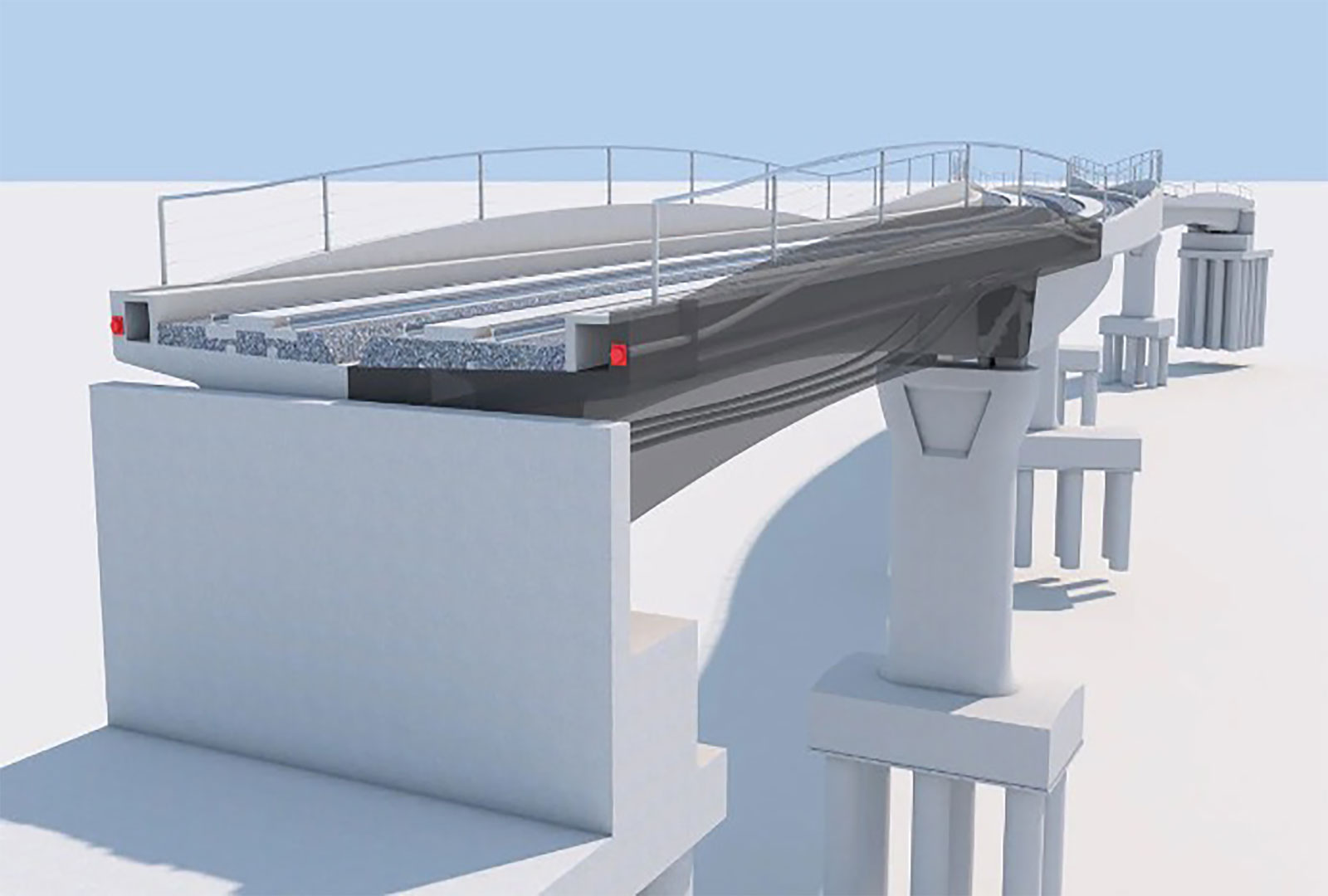
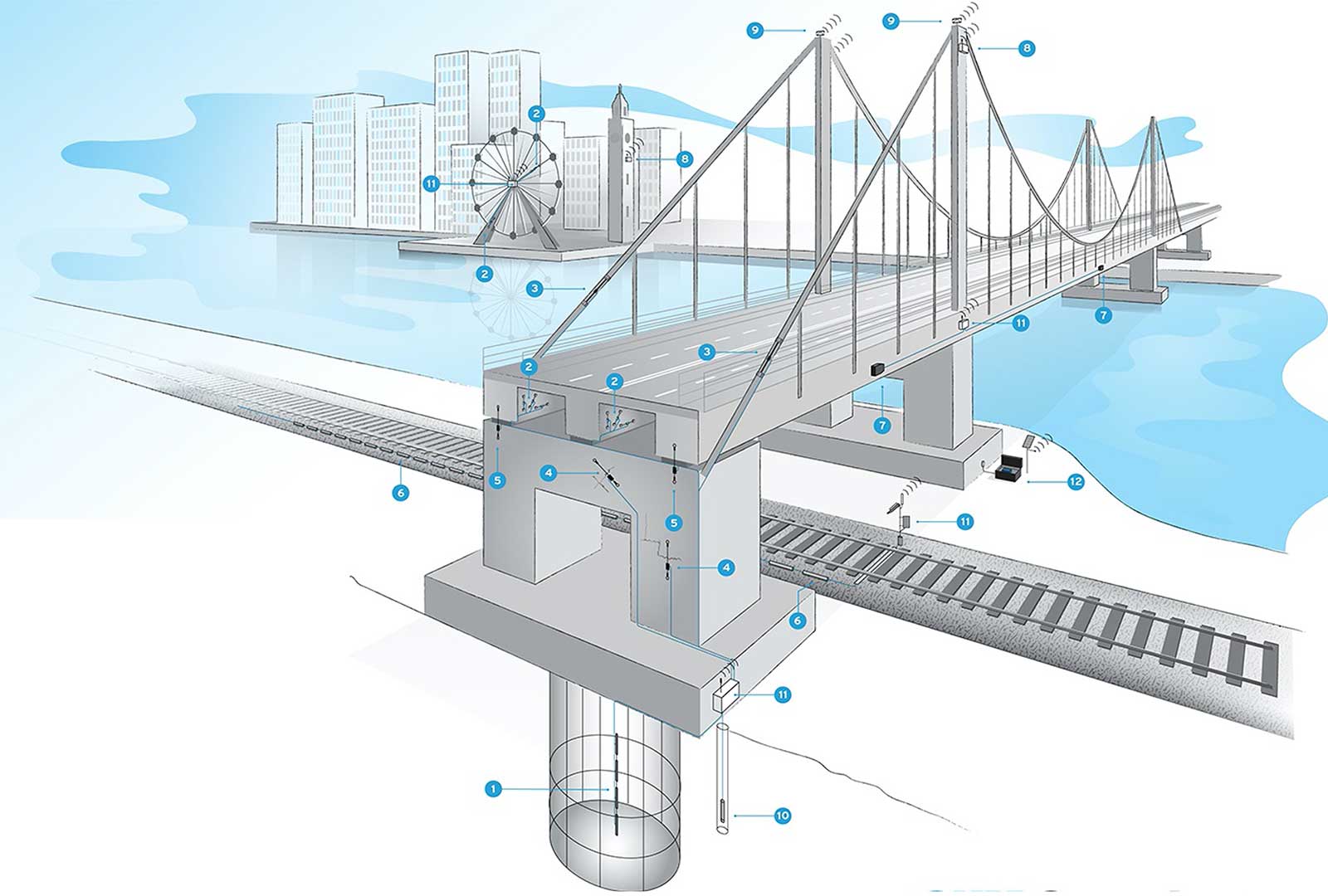

ADJUSTMENTS DUE TO DEVELOPMENTS INCONSTRUCTION MATERIAL TECHNOLOGY
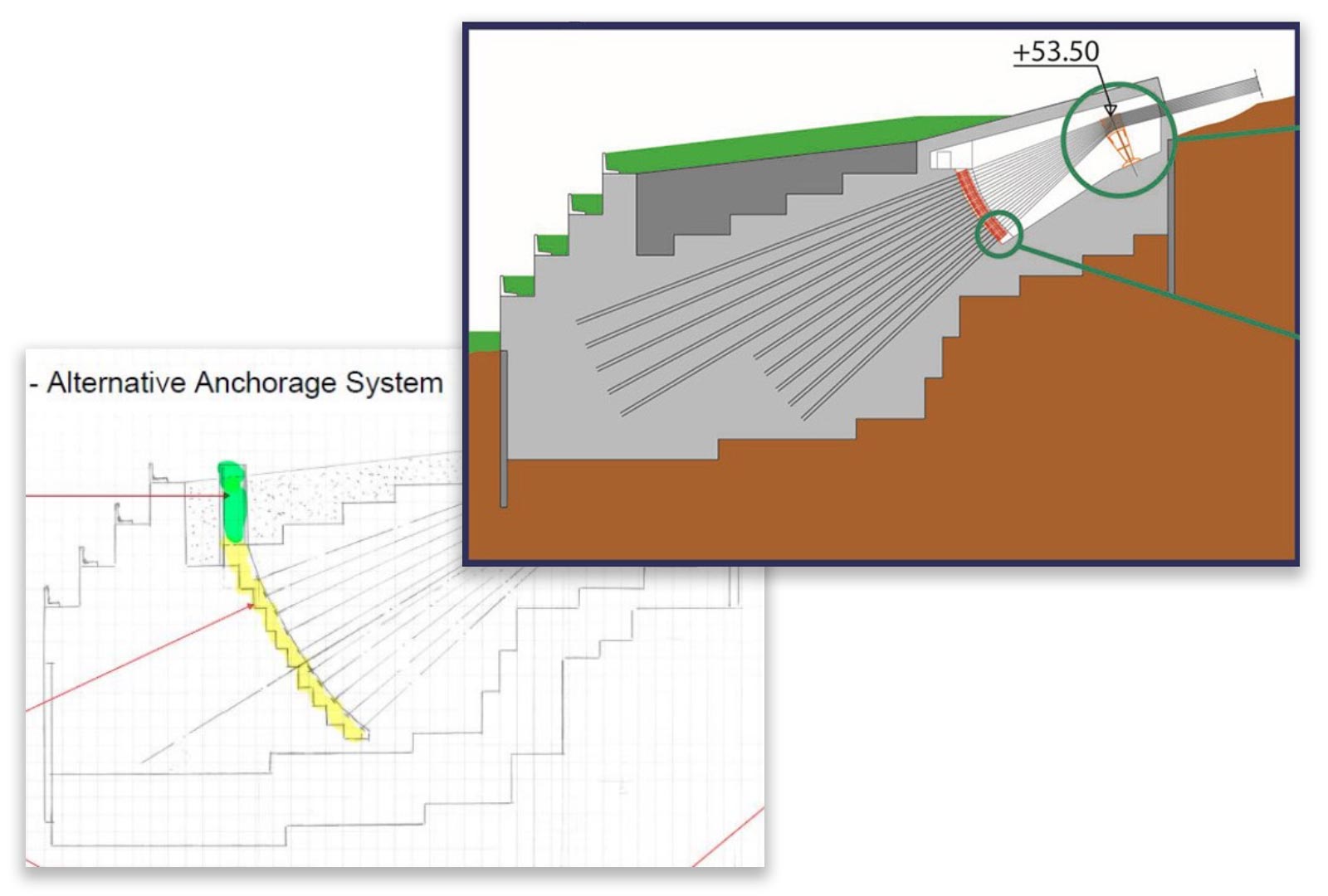
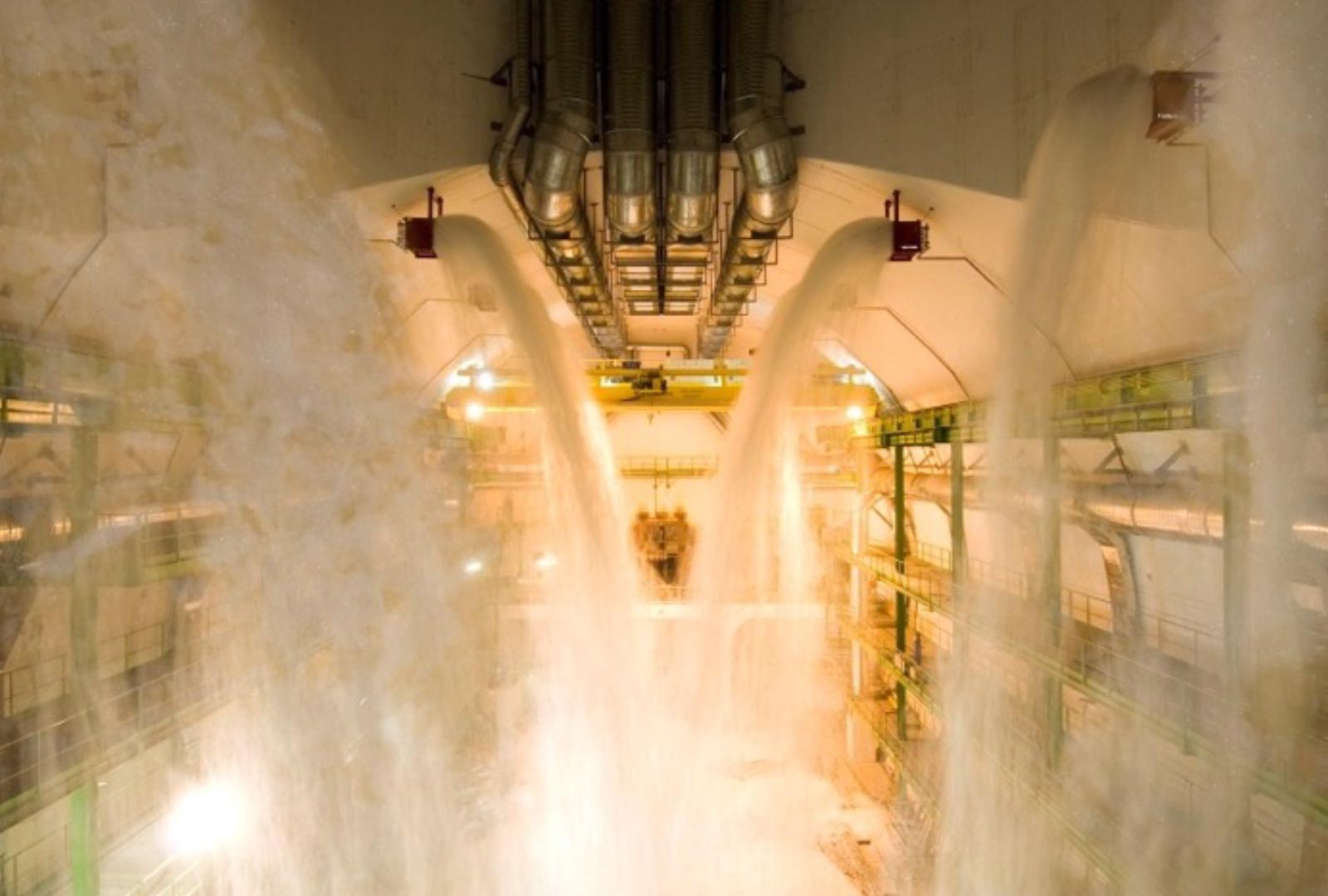
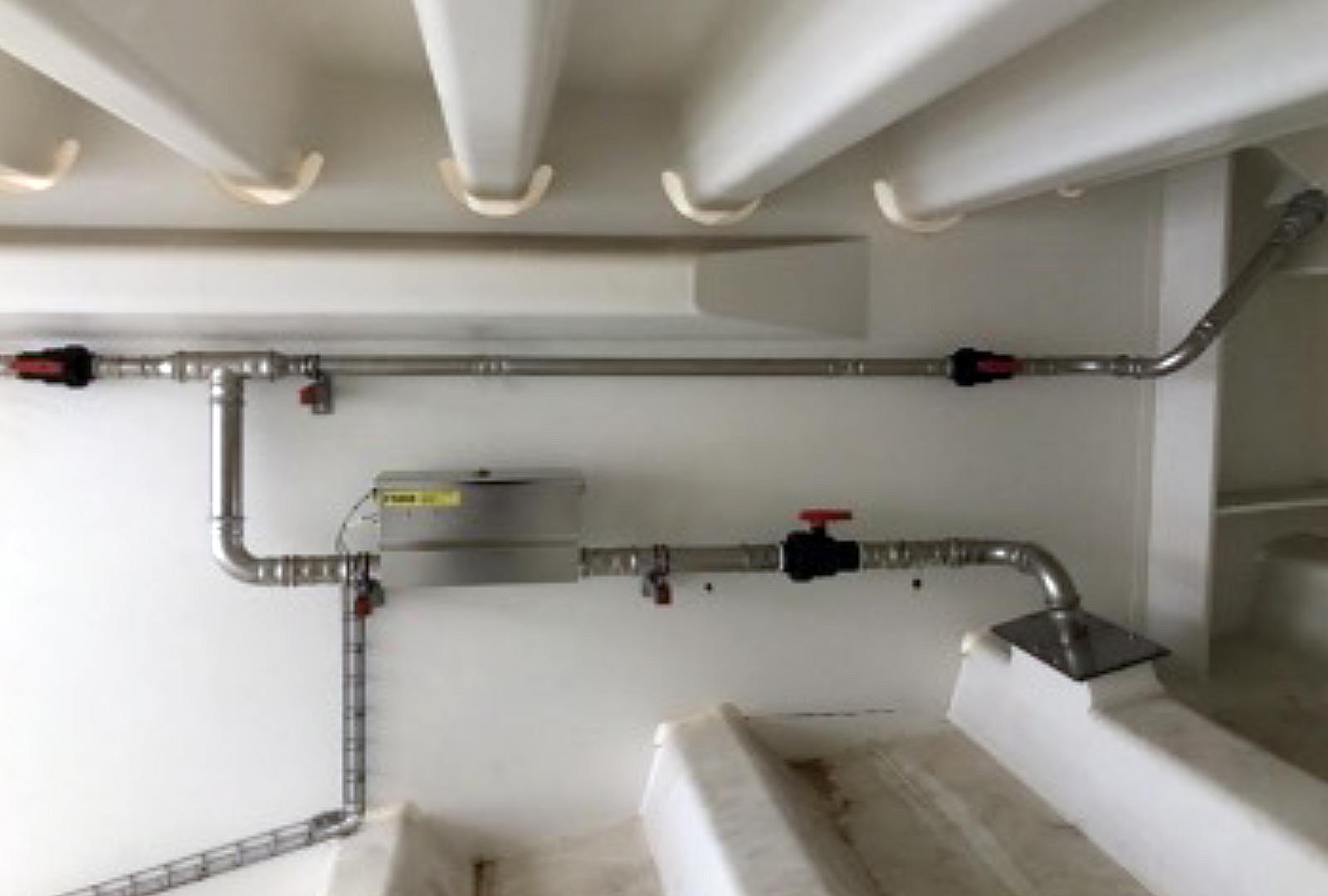
ADJUSTMENTS DUE TO DEVELOPMENTS I CONSTRUCTION MATERIAL TECHNOLOGY
- Redesign of the anchor blocks
- Internal dehumidification system for steel structures
- Active and passive fire protection systems
ROAD LINKS: PREDICTIVE MAINTENANCE, SMART ROADS PROVIDING ADVANCED DRIVER ASSISTANCE AND FREE FLOW TOLLING
- Geotechnical monitoring
- Smart roads
- Free flow tolling
- Initiatives promoting the bridge as a tourist destination
ROAD LINKS: PREDICTIVE MAINTENANCE, SMART ROADS PROVIDING ADVANCED DRIVER ASSISTANCE AND FREE FLOW TOLLING

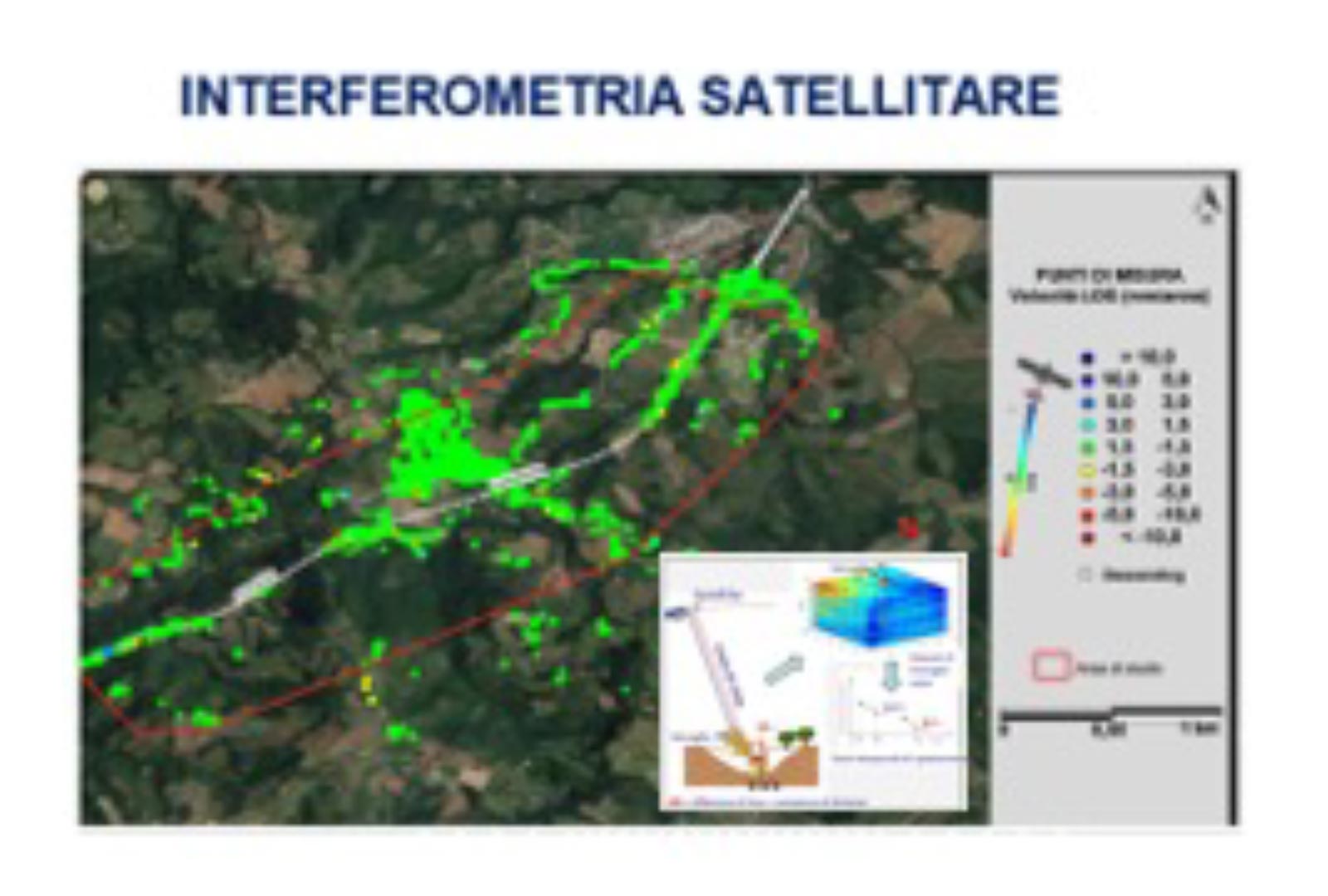
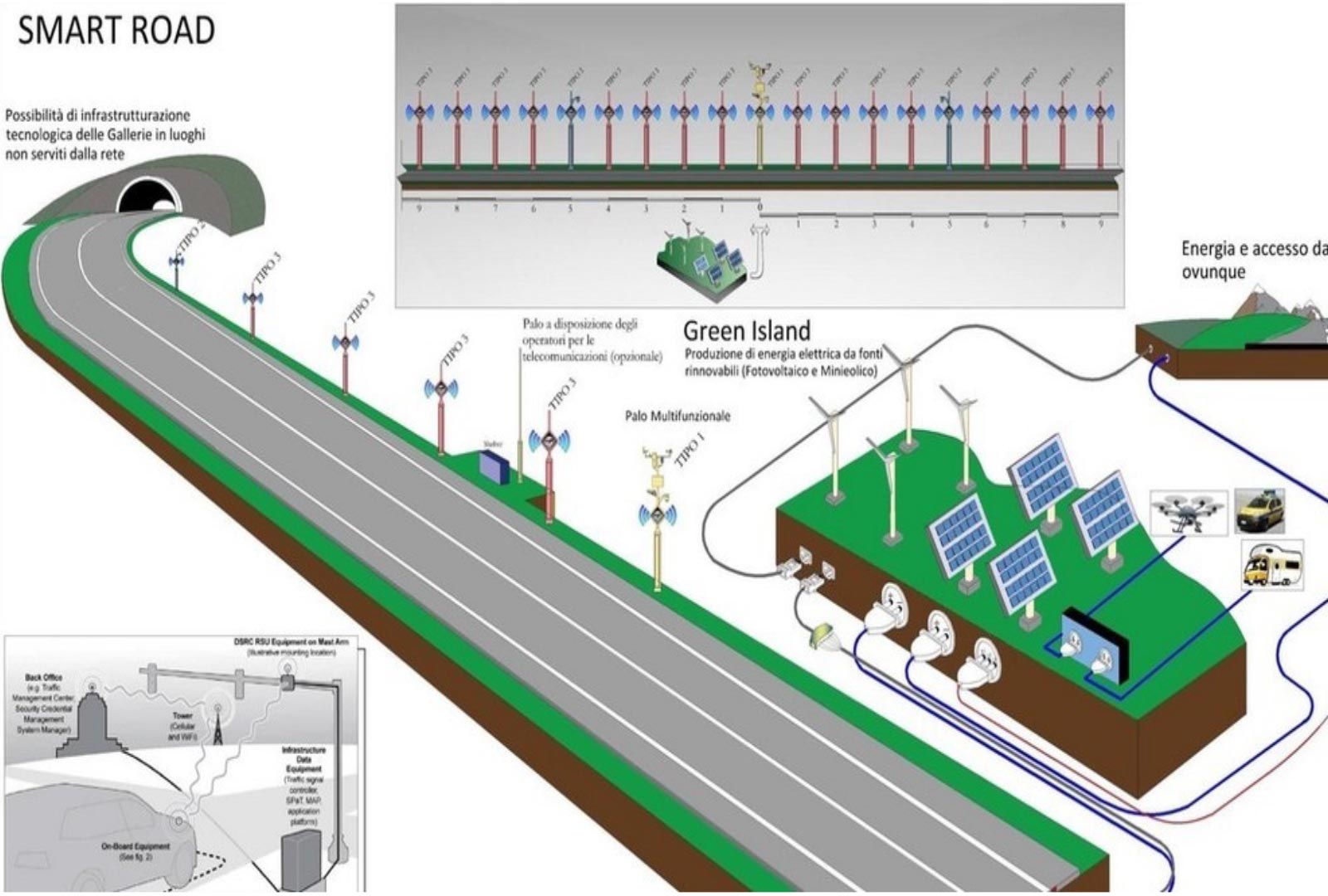
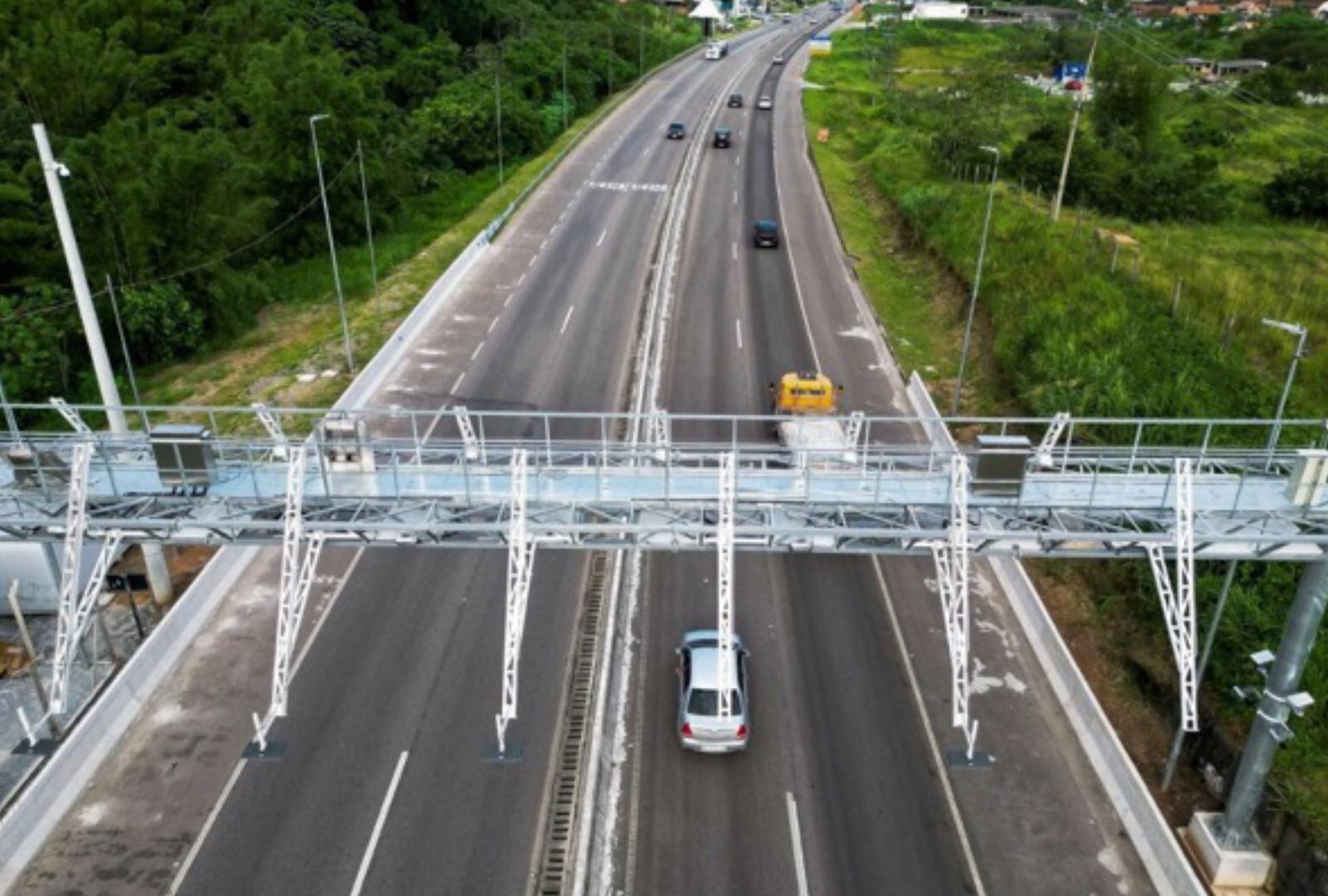
RAIL LINKS: STATION SECURITY AND SAFETY
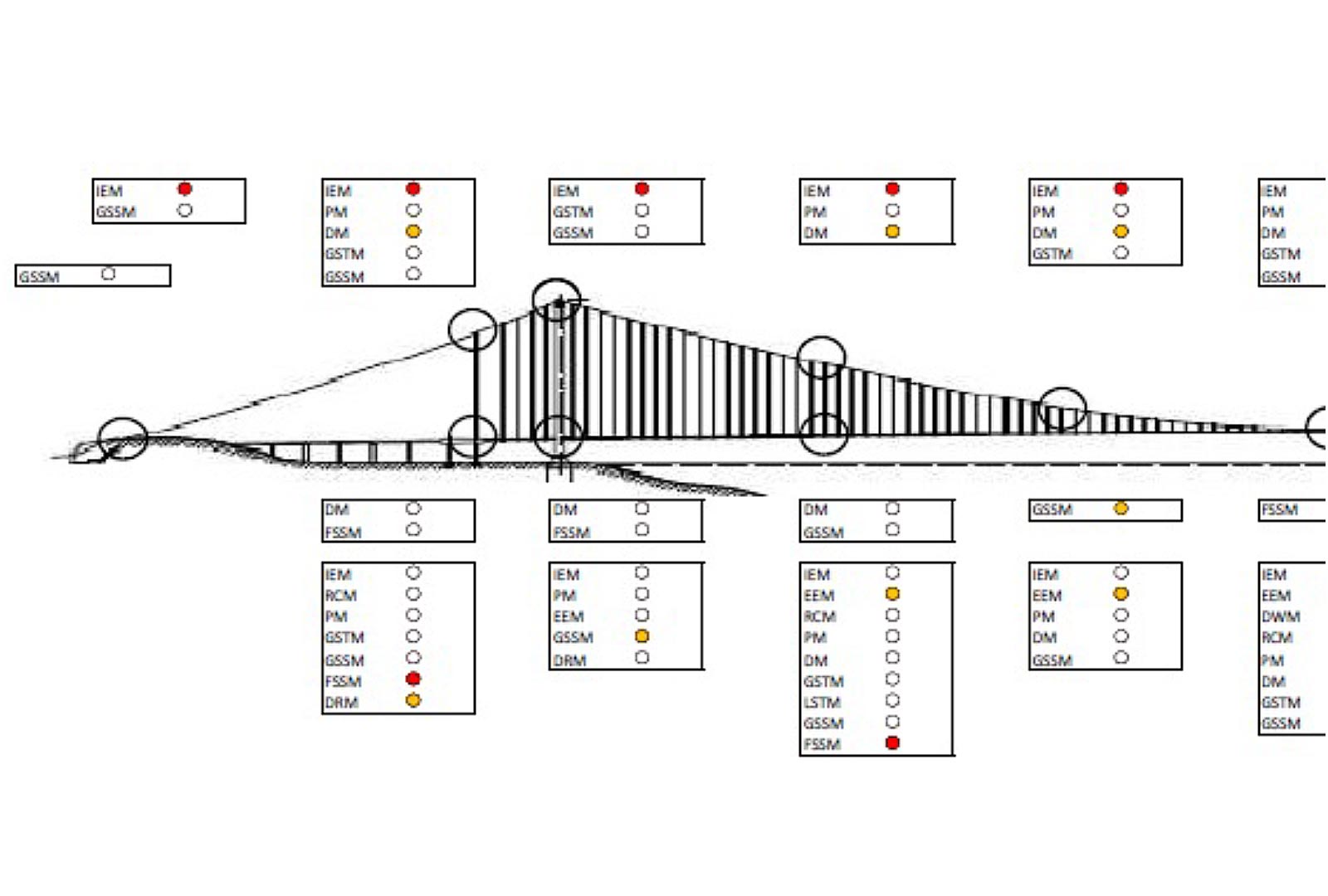
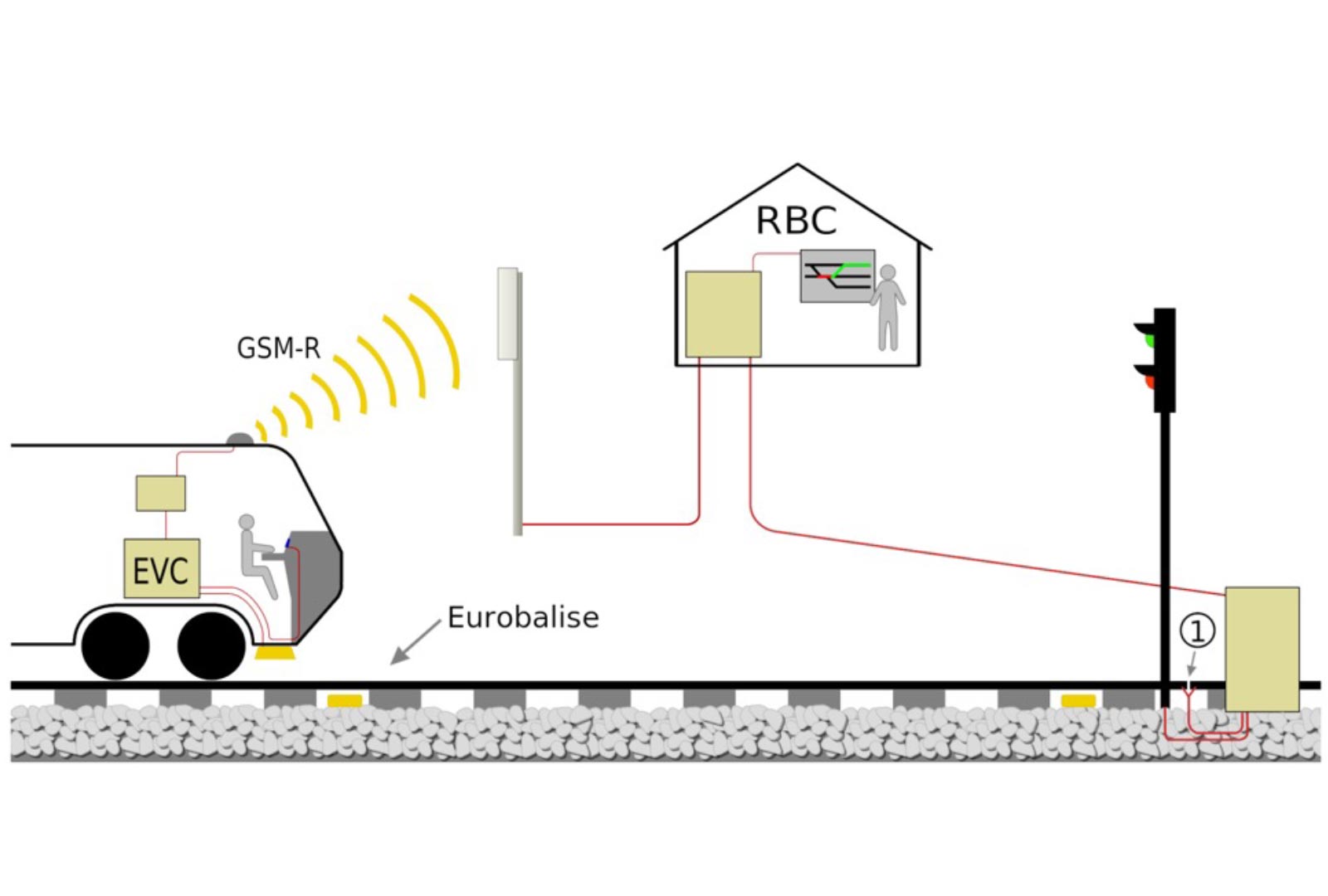
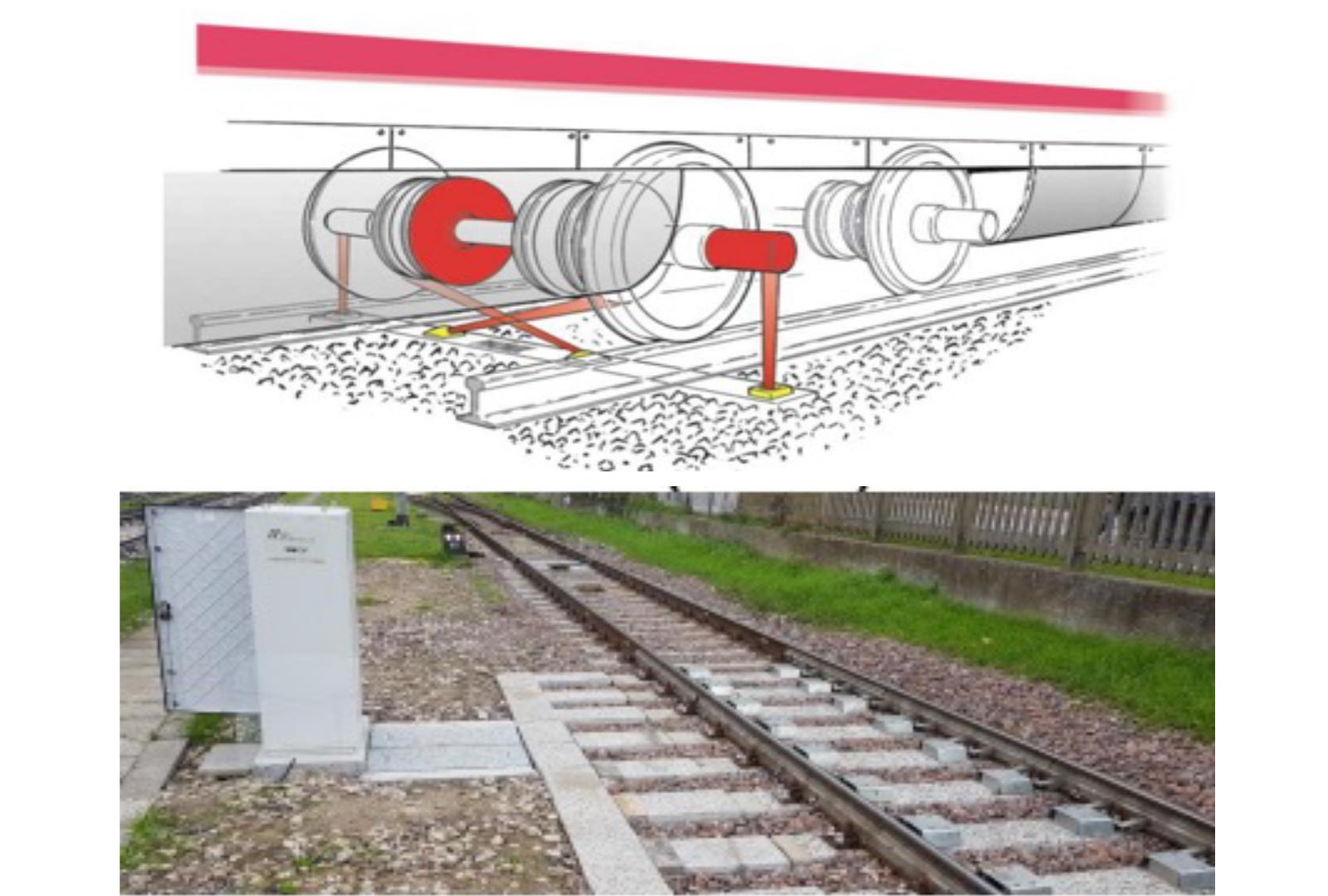
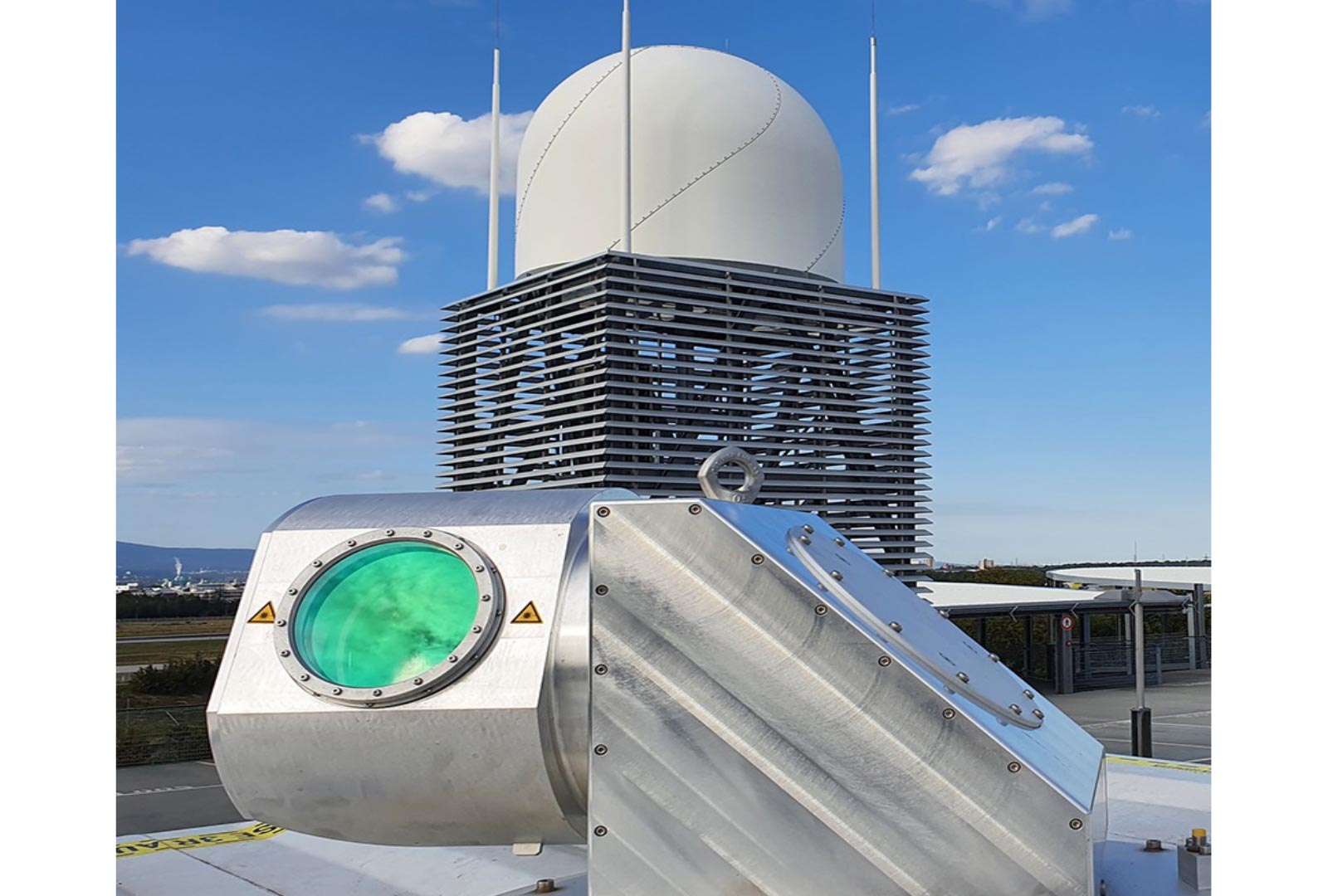
RAIL LINKS: STATION SECURITY AND SAFETY
- Updated structural monitoring systems
- Fixed derailment detection systems
- Level 2 ERTMS signalling system
- Permanent LiDAR station
UPDATE OF ENVIRONMENTAL DOCUMENTATION
Focusing on the:
- Environmental Impact Assessment (EIA),
- Environmental Impact Study,
- Compliance Report and Landscape Report
INITIATIVES MITIGATING LIGHT POLLUTION CAUSED BY THE BRIDGE
The removal of accent lighting and the use of highly directional lighting, reducing brightness and using tunable white LED lighting.
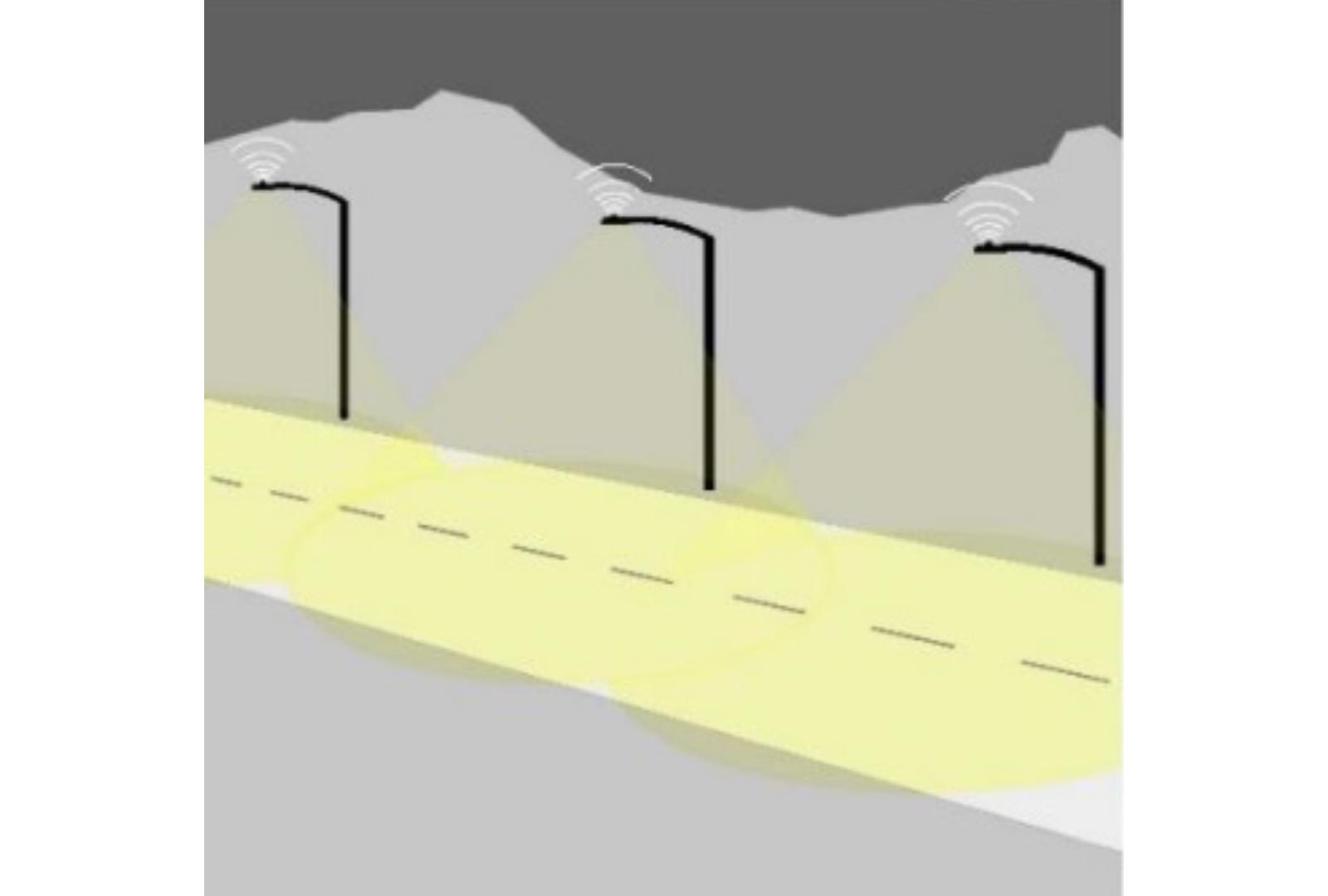
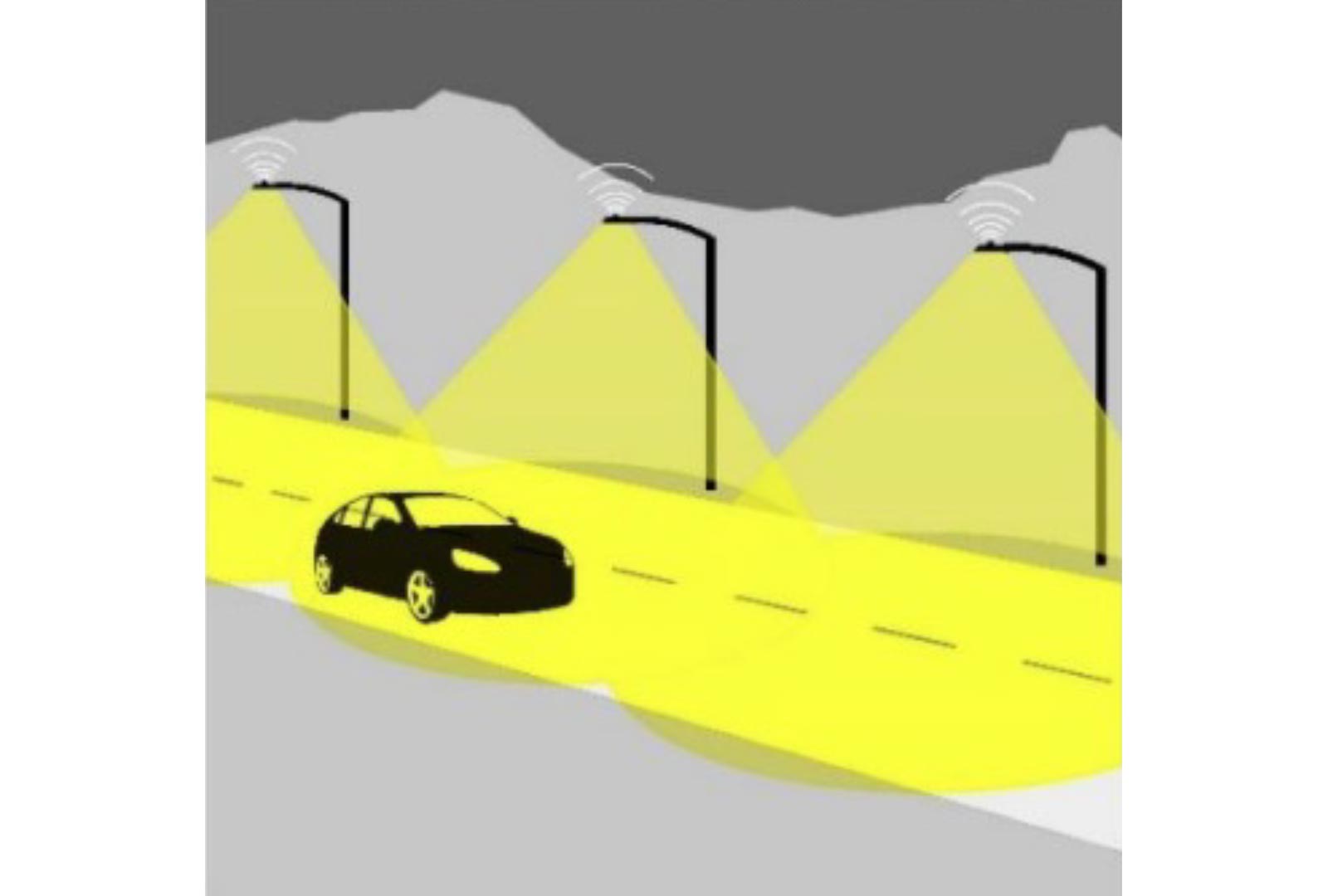
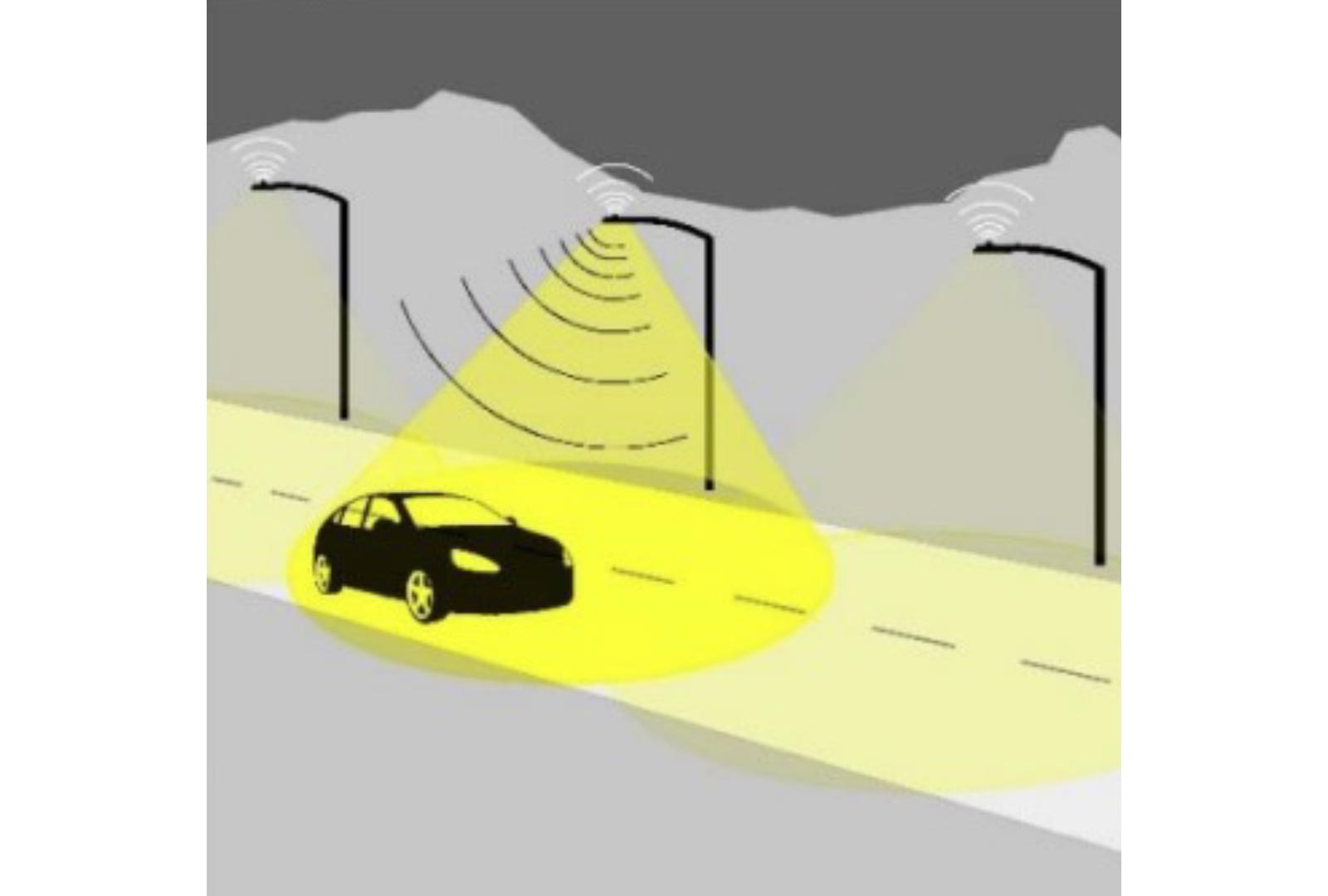
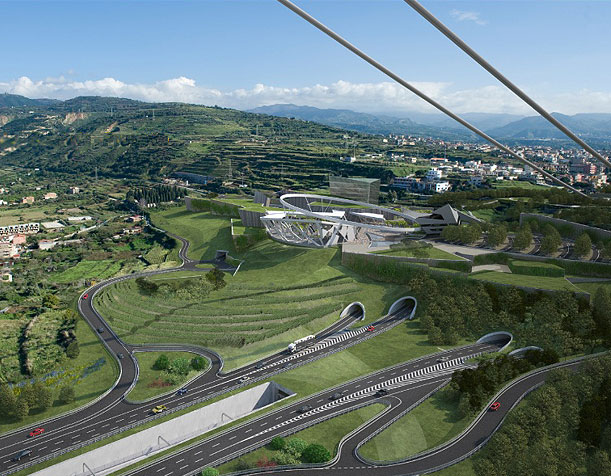
OPERATIONAL HEADQUARTER
The Operational Headquarters will be built in Calabria, at Piale in the municipality of Villa San Giovanni. It will be a multi-purpose complex hosting activities connected with management of the infrastructure and services, such as shops, restaurants and a conference centre.
The design was produced by Daniel Libeskind, the internationally acclaimed architect and urban designer, who is looking to use the project to translate his vision: “the Strait of Messina Bridge represents a unique way of linking the two coasts, at the same time offering travellers a new opportunity to experience this extraordinary location, a place for both contemplation and entertainment. The bridge is in itself an object that unites, symbolizing freedom of movement. This bridge for the twenty-first century will bring people together and provide a cultural meeting point”.

